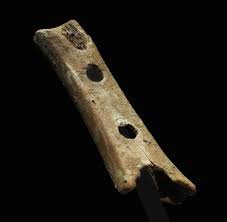
Article by EIH Subject Matter Expert
Dr. Sonika Sandhu
When and where did music originate, where were the first songs sung, who created the first beats? All these questions till date do not have a clear answer and the exact origins of music still mystify scholars and researchers alike. However there is one theory of ‘Motherese’ the vocal gestural communications between mothers and infants. This form of communication involves melodic, rhythmic and movement patterns as well as the communication of intention and meaning, and in this sense is similar to music. So possibly the lullabies were our very first forms of music.
Looking into the palaeolithic times, the primitive ancients found music everywhere in rhythms of nature, they manifested music by expressing their emotions. Music has always been linked to human beings and associated with intellectual, biological and social functions, such as mating and collective work as well as supernatural rituals. Some theories also suggest that creation of music is associated with language, with syllabic repetitions and guttural effects. Archaeological discoveries have led to the association of music with hunting, war and conflict rituals, shamanistic practices and cultural gatherings between various tribes and bands. In certain societies music was accompanied with displays of masculinity in order to win over right and fitness to mate. Besides mating rituals, music forms an integral part in the spiritual and religious sphere of the palaeolithic. Music along with ritual are orchestrated by empowered individual like shamans and priests. These ceremonies are highly communal and social activities and also act as an impetus for various groups to gather around and congregate.
There is a rich archaeological record from upper palaeolithic which demonstrate the importance of music and display the musicality of the people at the time. More than 120 sound producing objects have been recovered from various time period with this era. The objects range from flutes, whistles, drums, bull roarers, rasps. Some of the oldest musical instrument are two swan bone pipes dated to 36,800 +/ 1000 years BP from Geissenklo€sterle, German and a multipart pipe made from mammoth ivory from the same site, of around the same age. A neanderthal flute from Divje cave in Slovenia has been found dated to 50,000 years BP, possibly making it the oldest musical instrument. The people of palaeolithic were also able to identify and appreciate acoustic and sound producing quality of certain cave sites, and these places were often chosen and earmarked for important events and gatherings.
The musical instruments of the palaeolithic can be categorized into the following:
- Idiophones:
Musical instruments in which a resonant material such as wood, metal or stone vibrates to produce the sound. The sound is generated by striking, rubbing, plucking, or blowing the material of the instrument itself. They are the most basic instruments.
- Aerophones
Musical instruments in which a vibrating mass of air produces sound. Withing the aerophones are flutes and whistles that appear in the Palaeolithic. In 2009, a flute made of bird bones and ivory of mammoth tusks was found in ‘Geissenkloesterle’ cave in southern Germany. This archaeological site is 43,000 years old and is one of the places where there have been more discoveries of musical instruments.

The Divje Babe ‘Flute’
- Membranophones
Musical instruments in which a stretched membrane vibrates to produce sound. This group includes drums. The drums, which are part of the membranophones, are from the Neolithic. The remains of the skin that tanned for clothes were used to cover hollow trunks and vessels and they obtained drums. Practically there are no instruments with membranes because the materials from which they were made, being organic, decompose.

Barra drum from West Africa
- Chordophones
Musical instruments in which a stretched, vibrating string produces sound.
In the Neolithic, besides using the bows for hunting, we know that they also used them to produce sounds as they are shown in some cave paintings. They discovered that depending on the tension of the string and the size of the bow, it emitted different sounds.
The study of music and its origins is an important and fascinating topic for evolutionary theory and to understand natural philosophy. Music is a highly valued feature of all known living cultures, pervading many aspects of daily life, playing many roles. And music is ancient. Its global presence and uniformity indicates an innateness in human nature. Music and its multifunctional nature allows its usage in worship, mourning and in recreative spheres. The study of music would also aid to understand language development , it may open door to speech therapy and psychology. If, indeed, music caused hominid brain size to increase, as the archaeological record suggests, it stands to reason that music was the first language that our ancestors. Maybe it were those first songs of long past that gave way to our cultural developments.
References:
- Morley, I.R.M., 2009. Music and ritual: Parallels and practice, and the upper palaeolithic.
- Atema, J., 2014. Musical origins and the stone age evolution of flutes. Acoustics Today, 10(3), pp.25-34.















